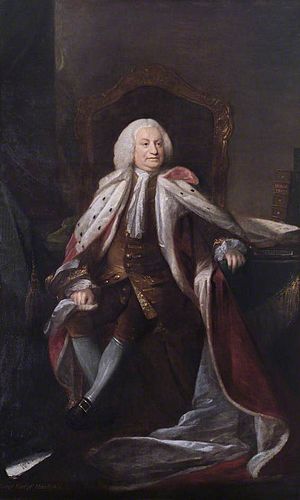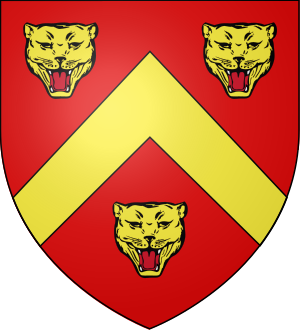George Parker, 2nd Earl of Macclesfield facts for kids
Quick facts for kids
The Earl of Macclesfield
|
|
|---|---|

Portrait by Benjamin Wilson
|
|
| 15th President of the Royal Society | |
| In office 1752–1764 |
|
| Preceded by | Martin Folkes |
| Succeeded by | James Douglas |
| Teller of the Exchequer | |
| In office 1719–1763 |
|
| Preceded by | The Lord Torrington |
| Succeeded by | George Grenville |
| Personal details | |
| Died | 17 March 1764 |
| Children | 2 |
George Parker, 2nd Earl of Macclesfield (born around 1697 – died March 17, 1764) was an important English nobleman and astronomer. He was known for his scientific work and for helping to change the calendar in Great Britain.
From 1721 to 1732, he was known as Viscount Parker. He was a Member of Parliament (MP) for Wallingford from 1722 to 1727. However, his main interests were not in politics. In 1722, he became a member of the Royal Society, a famous group for scientists. He spent most of his time studying stars and planets. He did this at his home, Shirburn Castle, in Oxfordshire. His father had bought this castle in 1716. George Parker built an observatory and a chemical lab there.
Contents
Changing the Calendar
George Parker played a big part in changing the calendar for Great Britain. He helped explain why this change was needed in Parliament. In 1752, Great Britain and its empire switched from the old Julian calendar to the newer Gregorian calendar. This change was made official by the Calendar (New Style) Act 1750.
The "Eleven Days" Myth
When his son ran for Parliament in 1754, the calendar change became a topic of debate. Opponents of his son's party brought up the calendar reform. There was a popular myth that people demanded, "Give us our eleven days!" This referred to the days that were "skipped" during the calendar change. A famous artist named William Hogarth showed this idea in one of his paintings. However, this idea of riots over the calendar change is just a myth.
Leading the Royal Society
From 1752 until he passed away, Macclesfield was the president of the Royal Society. This was a very important position for a scientist. During his time as president, he also studied the big 1755 Lisbon earthquake. His observations helped scientists understand more about earthquakes.
Helping Abandoned Children
In 1750, Macclesfield was asked to be a vice president of the Foundling Hospital. This was an honorary role, meaning he wasn't paid. He accepted the position and kept it until his death in 1764. The Foundling Hospital was a charity started ten years earlier. It helped abandoned children in London.
The Earl took his role seriously. He asked the artist Benjamin Wilson to paint a full-size picture of him. He then gave this painting to the hospital. You can still see this portrait today at the Foundling Museum.
International Recognition
George Parker was also recognized by scientific groups in other countries. In 1755, he became a foreign member of the Royal Swedish Academy of Sciences. He was also a corresponding member of the Académie des sciences in France. This shows how respected he was around the world for his scientific work.
His Family Life
George Parker was born around 1697. His parents were Thomas Parker, 1st Earl of Macclesfield and Janet Carrier. George Parker was married two times.
His first marriage was on September 18, 1722, to Mary Lane. She was the daughter of Ralph Lane, a merchant. They had two sons:
- Thomas Parker, 3rd Earl of Macclesfield
- Hon. George Lane Parker
His second marriage was on December 20, 1757, to Dorothy Nesbitt. They did not have any children together.
See also


